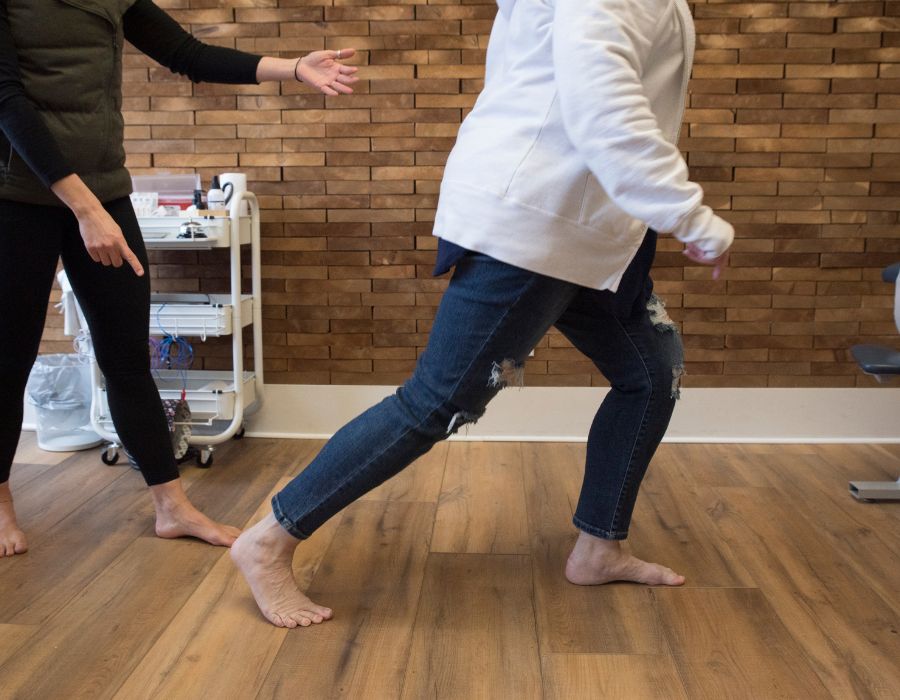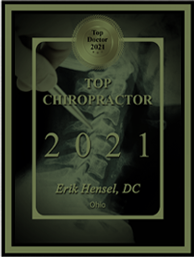What the heck is functional rehab?? Functional Rehab is not just strengthening a weak area, it’s retraining movement patterns, proprioception, and neurological connections to improve efficiency of muscle work and firing. In plain English, that means your going to work back through layers of injuries and compensation patterns so that you can move better than you have in years. You may not have even realized you were moving poorly, but if you are starting to mention or think that you’re just getting old, functional rehab is your fountain of youth. If you’re experiencing a recurring injury, especially an injury that you have rehabbed traditionally with temporary effectiveness, then functional rehab is your game changer for long term resolution. If you’re in chronic pain, this is part of our signature life changing cocktail.
What to Expect
Expect to be met where you are with no judgement.
Expect to be empowered with understanding of how you got to where you are and how to get to where you want to be.
Expect to understand the purpose for each exercise.
Expect to discover how big of a difference tiny changes in movement can make.
Expect to gain a better body awareness.
Expect to work, not to be overworked, but to be held accountable.
Expect to be humbled by the simple difficulty of some movements when done correctly.
Expect to discover unprecedented efficiency for daily movements, exercise, and sports performance with mastery of those simple movements.
Expect a decrease in pain, or discomfort quickly.
Expect other aches and pains to show up temporarily as you are unraveling old compensation patterns.
Most importantly, Expect to feel better than you expected you could
Functional rehab requires a commitment to yourself. If you’re tired of getting the same results and are ready for a mind blowing body transformation, make sure this is part of the therapy cocktail we prescribe in your program.
Injury and Adaptation
Our bodies were designed with an amazing ability to adapt to whatever stimulus we give it. This applies both to movement and to internal function. For the purpose of this article, we’ll refer just to movement adaptations. If you would like to learn more about adaptations your body makes internally and how that affects how you look, feel, and process, please visit our functional medicine page.
Despite being the most highly functioning animals on the planet, adaptation is an innate quality of all animals. It is an archaic trait that helps us get to tomorrow so that ideally we can procreate and continue our species for many more years. The only problem is that your body doesn’t necessarily make these decisions to change movement consciously. Your body helps you reroute movement as quickly as possible to require the smallest effort, with the least pain possible so that you can hunt, gather, and if a tiger tries to attack you, you can escape. That’s a pretty amazing survival feature, for the short term.
You see, though the higher thinking portion of our brain knows that for the most part, we have ready access to food and tigers live in zoos, the archaic, adapting portion of our brain doesn’t. Your cognitive brain can think long term. The archaic portion however is very short sighted. So what does this mean?
It means that as soon as your body figures out a way around the pain, or creates a new path to accomplish its goal, it moves on. Forgets about the old problem. Sweeps it under the rug to deal with another day. It is these little (or sometimes big) changes we make that lead us down the road of a cumulative injury cycle.
Cumulative Injury Cycle
The cumulative injury cycle can begin with a traumatic injury (sprained ankle, broken bone, torn meniscus, etc etc), or can be more repetitive in nature (running form, factory line work, carrying a baby on the same side all the time, etc). Either way, as tissue becomes over stretched, over pressured, or over-used, your body has to figure out a way to continue doing that motion. Luckly, for each motion we have in our bodies, we have a couple of main mover muscles, and a number of assistants. Between the primary movers, secondary movers, and other body parts that can assist in making a movement happen, there are a variety of ways your body can respond to alter your movement pattern and allow the “movement” or something similar to continue to happen.
When left unaddressed, this new way to move eventually leads to irritation or injury of the new pattern, thus creating a new injury with a new compensation pattern. This continues to repeat until you get to the point where the straw breaks the camel’s back and you can’t get out of pain because your body doesn’t have any further escape or the pain goes away temporarily but returns (typically it returns more frequently and/or more intensely over time.
This doesn’t sound like immaculate design?!?
I suppose that’s a matter of prospective. If you don’t ever learn that working back through previous injuries is totally possibly with the right guidance, then yes, it can be crappy in the world we live in today. However when you consider it’s purpose and that you have another portion of your brain for rational thinking, it’s pretty amazing to have a fail safe as well as the ability to properly address the issue of the long haul once you have the time, energy, and/or desire.
The key to functional recovery is to look at the body as a whole rather than as a compilation of body parts. For example, your current or recurring complaint is headaches. You’ve been to chiros, pt’s, and massage therapists. All have helped to some degree or another, but only temporarily. After discussing your health and injury history, we discover that you’ve had plantar fasciitis (heal pain) on and off for years. You You also get bloated after meals and your headaches are worse with your cycle. All 3 of these components are likely contributors to these headaches. To learn more about how bloating or cyclical changes may impact your headaches, see the digestive issues and pms pages respectively. Regarding the plantar fasciitis, what if I told you that there is a connective tissue inside your body that helps your body coordinate and communicate with itself, from head to toe, front to back, side to side and criss cross/around the body. That tissue is called fascia and there is a direct line from heal to head. Neglecting this line will leave you bouncing back and forth between the 2 pains, settling in on one as the other goes away, or having recurring flair ups of either or both.
If this sounds similar to how your body is functioning currently, or you want to prevent this from being the path your body follows, using your conscious brain to seek direction is a great option for long term resolution, new injury prevention, and performance enhancement through maximizing movement efficiency.















